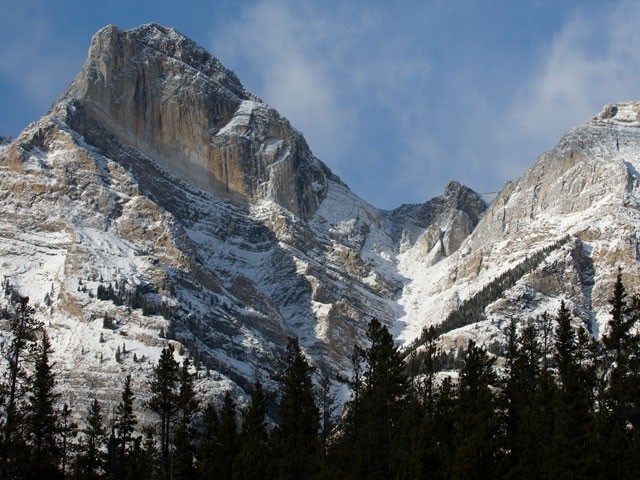www.cultureworx.photostockplus.com
Although first visited by an adventurous surveyor by the name of David Thompson back in 1810, for the last 100 years Jasper National Park has been known by the first name of fur trader and post manager Jasper Haws.
Originally dubbed the Jasper Forest Park in 1907, before the National Parks Act became law in 1930, this 10,878 square km block of pristine land with over 1,200 kilometres of hiking trails, rugged peaks, some of North America’s rarest wildlife and one of the few road-accessed ice fields in the world now welcomes millions of visitors every year.
A world heritage site and the largest national park in the Canadian Rockies, Jasper remains a sanctuary for grizzly bears, moose, caribou, wolves, elk, cougars, bighorn sheep and wolverines, along with many other critters.
It is for this reason that Jasper’s unfitting birthday present — 81 kilometres of oil pipeline cutting directly through the park courtesy of Kinder Morgan and contracted to the North American Construction group — has many visitors and several park staff wondering if the Alberta government, in its attempt to comply with the demands of multinational oil corporations, has gone completely and utterly mad. Under a 1950 law, it seems that there was no basis to deny the project.
The legal loophole that the pipeline is passing through could be an article all on its own. But as we drove up the well-maintained Highway 5 in the final days of October, Jasper’s peaks and some of the valleys were already generously dusted with the coming winter’s snow, focusing our attention on the natural surroundings and making us forget the industrial intrusion. With the smaller lakes already beginning to freeze over, the park was void of the hordes of summer visitors and was the perfect time to explore the park at our own pace.
Mount Columbia, Alberta’s tallest peak at 3,782 metres, and several other peaks over 3,000 metres provide a stunning backdrop en route to the small townsite of Jasper, which roughly 4,500 people call home.
First reached by rail in 1911, Jasper’s train station continues to welcome visitors on both the VIA and the Rocky Mountaineer, with the latter providing seasonal connections from Whistler.
Stopping in town, we had an animated conversation with a member of the parks staff about the new pipeline and saw first hand the backhoes and excavators tearing up the landscape. Seeking a less modified environment we loaded up with a week’s worth of maps and brochures and headed to the Maligne Canyon, made of dramatic limestone pitches continuously being formed by the Maligne River plummeting 23 metres into a gorge.
Heading up the road to the source of the river and Jasper’s largest lake, the aptly named Maligne Lake, we paused to see a herd of elk feeding in the afternoon sun. The 22 kilometre-long lake is an awesome expanse of water surrounded by a wealth of dramatic peaks. This is the post-card-of-the-Canadian-Rockies stuff that people come from around the world to see.
On the way back to town we stopped to watch a moose feed peacefully at dusk in the shallows of Medicine Lake; a massive, odd creature in an odd lake. Medicine Lake has no surface passage and its water drains underground for several kilometres before eventually reaching Maligne Canyon.
Checking in to the posh Fairmont Jasper Park Lodge, thanks to the economic intervention of a good friend at the Chateau, we were assigned to our own cabin. The first JPL buildings were erected in 1922, and the cabins now dotted around Lac Beauvert blend beautifully into their surroundings. Originally dubbed “Tent City” back in 1915, the Jasper Park Lodge has long been a part of Jasper’s history.
Waking at dawn the next day, we were privileged to have a glimpse of a pack of wolves, noses to the ground and running wildly across the road, apparently on the scent of their next kill. All seven were long gone by the time I made a feeble attempt to grab my camera from the van.
Before beginning our journey south along the Icefields Parkway, we stopped for a short hike in the valley of five lakes, taking in the various shades of emerald green and vibrant turquoise from the waters overshadowed by Jasper’s own ski hill, Marmot Basin.
Cruising along the parkway we would stop to take in a handful of teeming waterfalls, and briefly stop at the ice field itself, already comfortably blanketed in another season’s snow, before heading on to the splendor of Lake Louise.




